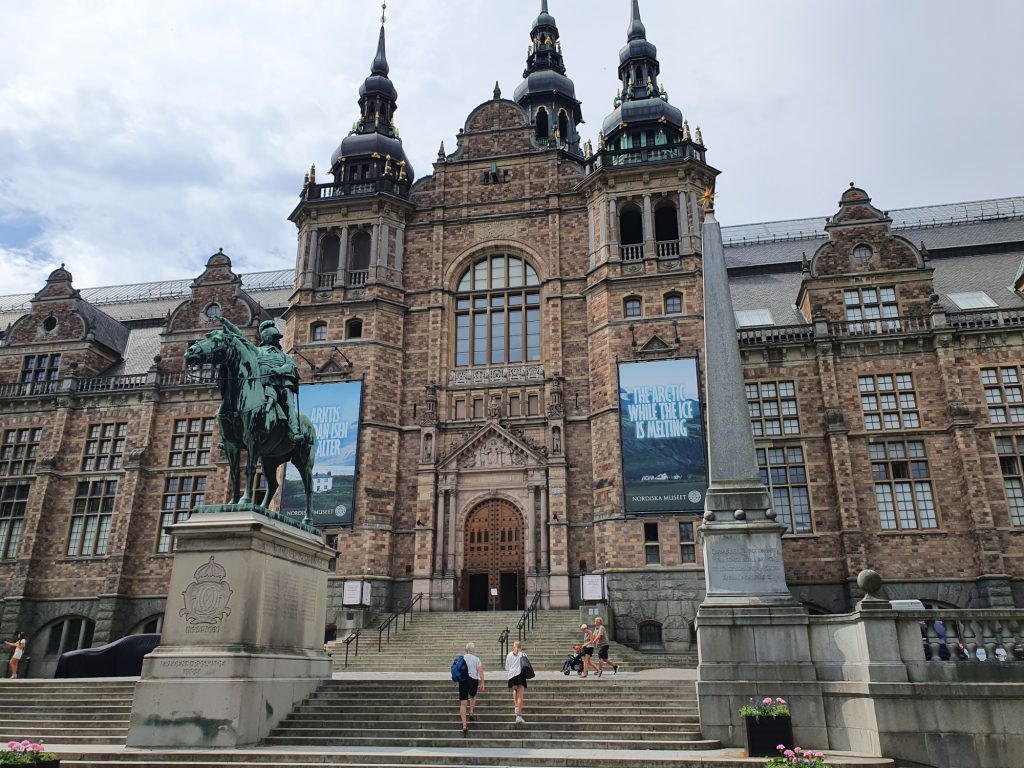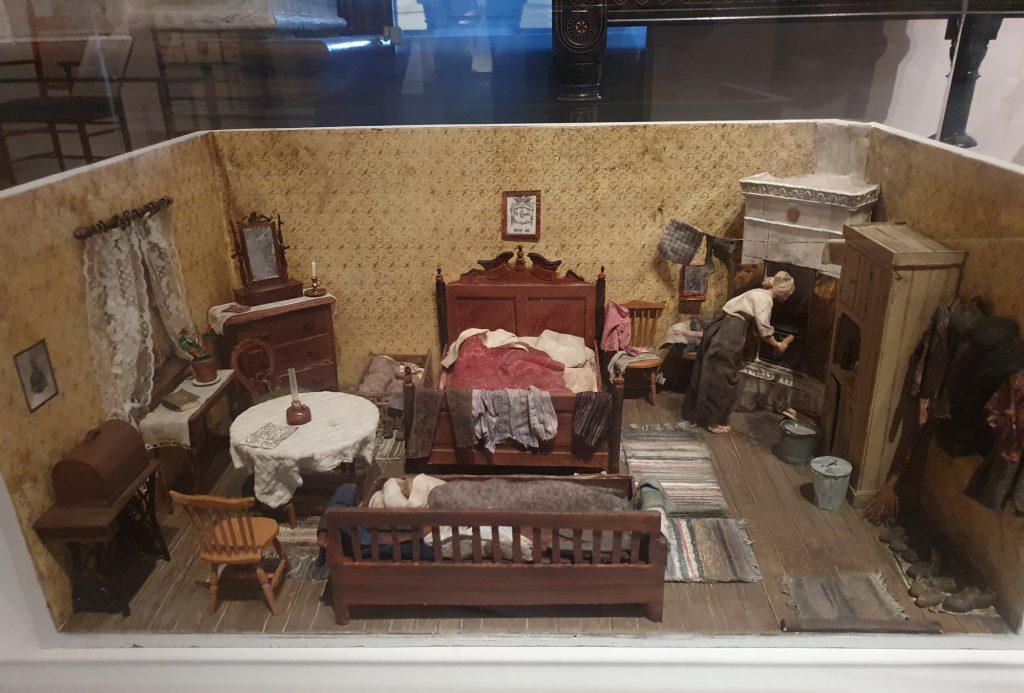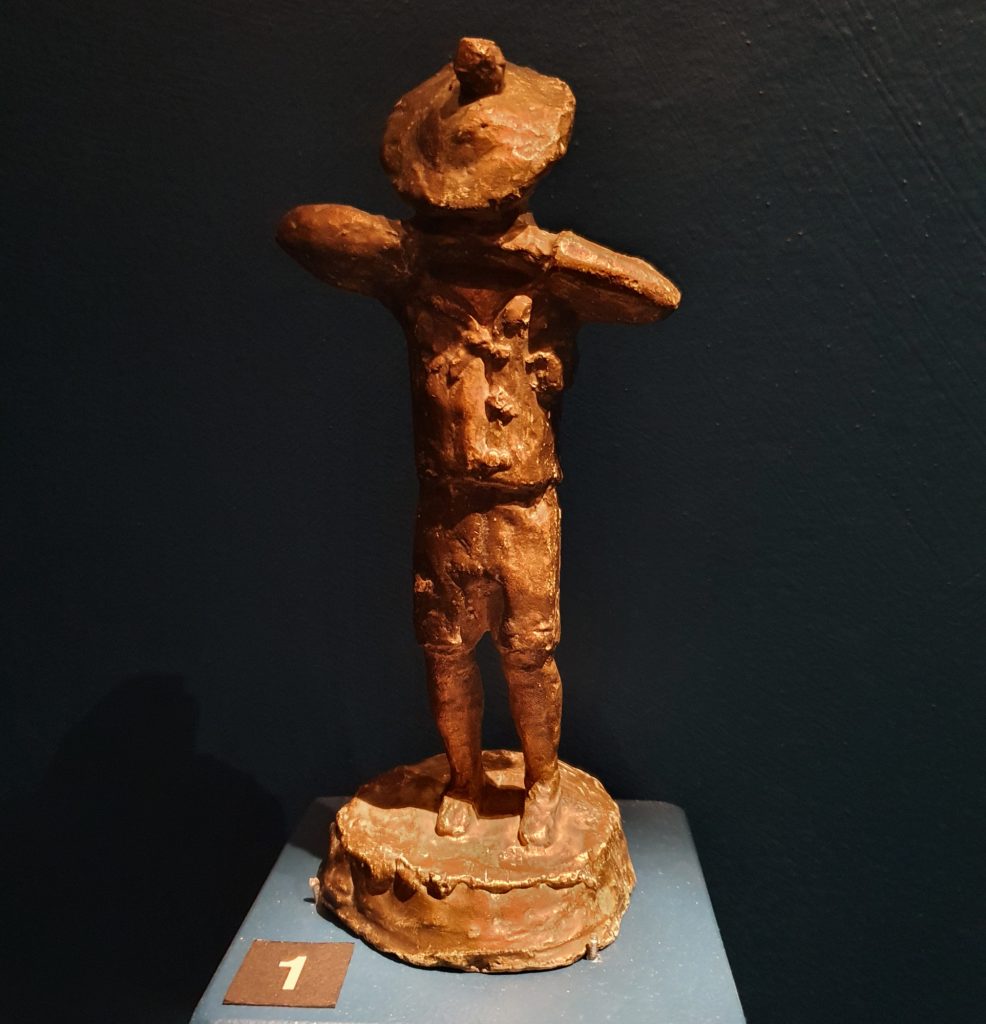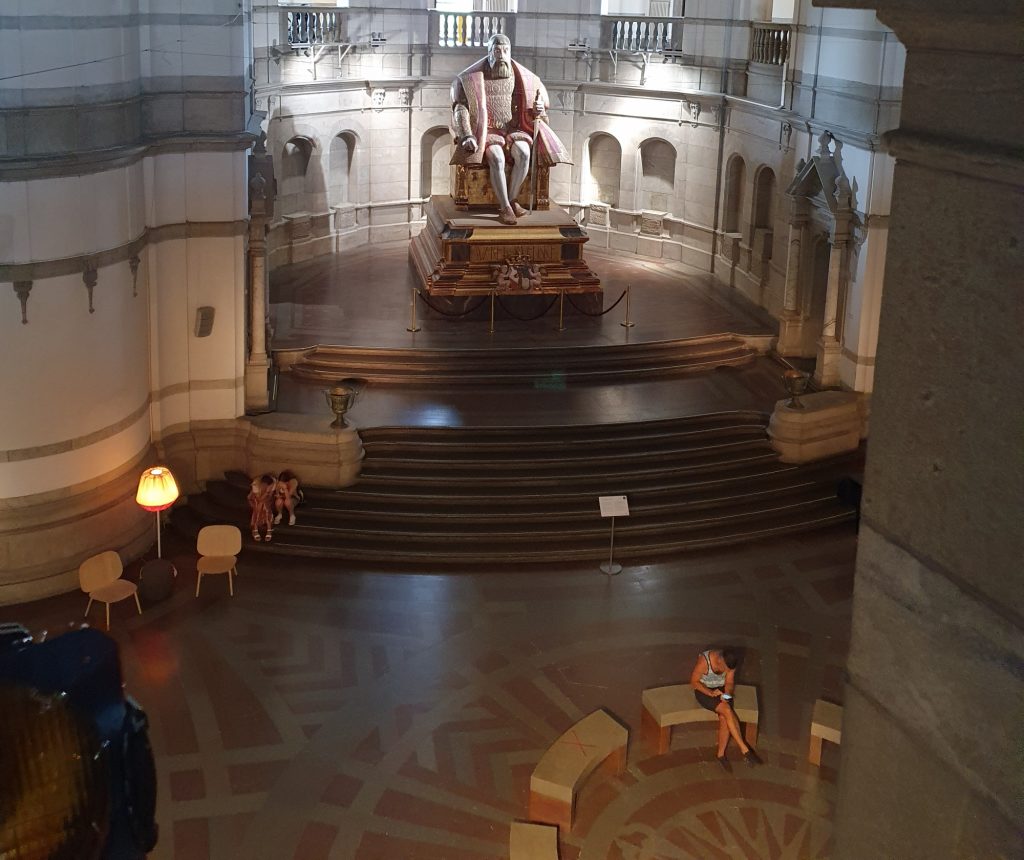When he wasn’t picking and choosing buildings to move around Sweden, Artur Hazelius was busy collecting ephemera for exactly the same reason. The buildings went to Skansen (we visited in April) the smaller stuff was meant for his grand museum which became the Nordiska Museet (Nordic Museum).

Artur collected all manner of stuff. In fact, some of his less kind contemporaries said he collected junk. But Artur knew he was bringing together a lasting legacy of culture and tradition which was wholly Nordic. And today I visited a mere fraction of the 1.5 million objects.
Artur wasn’t interested in kings, queens, politicians and the general sweep of history. Other museums could deal with those things. He wanted to preserve what made the Nordic people, Nordic.
Starting in 1872 with a woollen skirt from Stora Tuna, he quickly established a Scandinavian-ethnographic collection on Drottninggatan. This became the foundation for the building on Djurgården. The impressive and massive building opened in June 1907 and has been a commanding presence on the island ever since.
From the outside, the building appears to house a lot of exhibits. I feared that it would be one of those fusty old museums of case after case of uninteresting identical objects with old cardboard identity cards. I’ve visited a few. My fears, however, were left well behind when I started on the top floor and worked my way down.
I didn’t visit everything. That would have taken more hours than I was prepared to stand up for. But the sections I did visit convinced me that I had to return with Mirinda. In fact, I sent her an image of a dolls house type room.

The card for this read: Housing shortages are a recurrent social problem. In the 1870s there was a need for cheap housing and the solution was the so-called “cooking-room”, a room of about 20 square metres with the cooker built into the tiled heating stove. Most people lacked running water and drainage. The room was usually inhabited by a working-class family plus lodgers.
It reminded me of the Glasgow tenements I discovered during my studies at Surrey. It’s awful to think of a family living in just the one room then having to share it with a stranger. I guess it’s an indication of how our sensitivities have changed with the years of prosperity we’ve attained.
We were talking to Anders the other day and he told us about a chap they had renting a house from them which measured 50 square metres. He stayed for ten years. I said I couldn’t imagine living in 50 square metres for that long. And yet, not so long ago, people were living cramped into a space less than half that.
From the depression of the 19th century working class to a wonderful exhibition on the Sami, the indigenous people of the north. A wonderful collection of what makes them who they are.

For instance, I discovered that a Sami hat indicates where the person is from. Each one is different, depending on the wearers origins. Sometimes the differences are small but, to the Sami eye, they are as clear as the hierarchy of neck rings are to the Ndebele tribe of South Africa.
This exhibition is one of many changing areas of the museum where the collection is curated into new visions of the old and the forgotten. Artur’s collection seen through different eyes every time. It’s what will bring people back. Again and again.
I rather enjoyed the little exhibition featuring the art of August Strindberg. Known for his writing, his paintings are an interesting diversion. And a single sculpture, the Weeping Boy, is a fascinating inclusion.

He made it in 1891 as part of what people were calling ‘automatic art’. It was a case of not planning something and just jumping in there with hands that worked the clay without direction. Being Strindberg, he gave the artistic process his own name. He called it ‘forest sirenism’.
The whole museum was a delight and I thoroughly enjoyed my visit. Well, actually, that’s not entirely true.
At the beginning, down in the lowest level, the visitor is invited to view a short film about the beginnings of the museum and the work of Artur Hazelius. The screening is in a beautiful little theatre which seats around 100 people (50 during the plague). I was the only person there.
Now, obviously it’s all in Swedish, as it should be. However, some helpful person decided to add English subtitles. All good and handy except that the subtitles are in white and, against the primarily black and white images, generally impossible to read. In fact, the whole film would have been improved by getting rid of the subtitles.
Or, perhaps, changing the colour of the subtitles so they could be read. I can only imagine that the person responsible didn’t actually view the finished product. Which is a bit weird if you think about it.
But that is a minor quibble when it comes down to the museum as a whole. I’d say, the Nordiska Museet is a magnificent testimony to Artur Hazelius and his desire to save the past, well beyond his own future.




Pingback: Shitastrophe | The House Husband